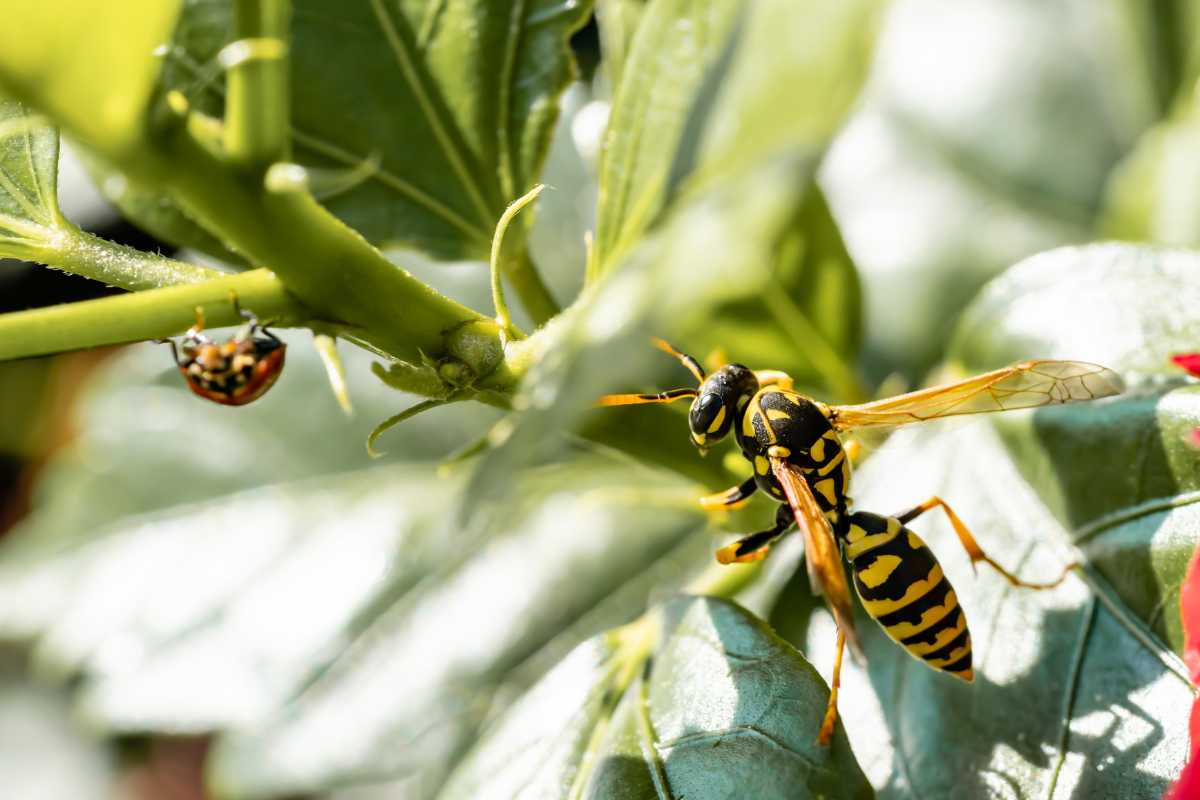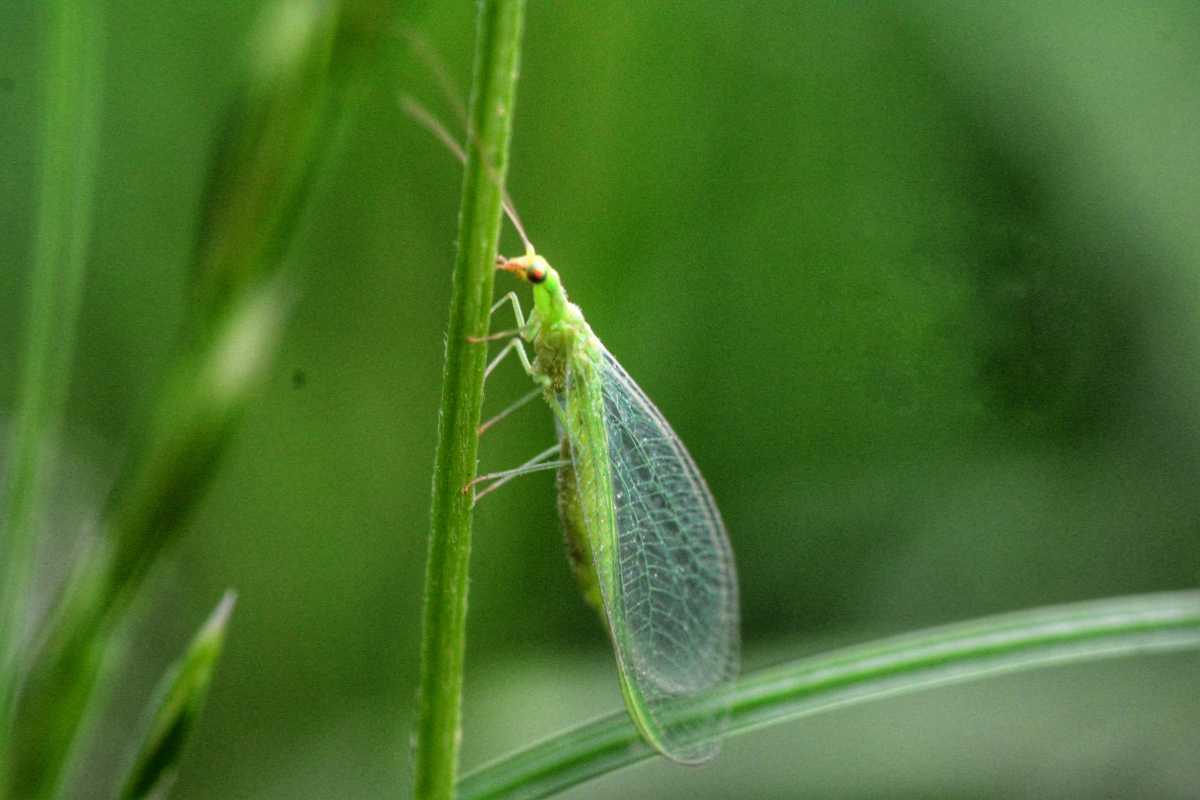Ladybugs are scientifically known as ladybeetles or ladybird beetles. They are small but fierce predators with a round or oval build. The more common ones have black spots on their forewings which can come in red, yellow, or orange hues.
Ladybugs consume common garden pests, it is because of this reason that they have become widely preferred for biological pest control.
Furthermore, these creatures are easy to find or bought and don’t require much care.
However, through the years, experts think that their effectiveness has been overstated while their disadvantages have not been given much thought. This is particularly true when releasing non-native ladybugs.
You see, ladybugs are migratory insects, which move in search of food. This means that they might leave your garden if there aren’t enough pests.
Not all ladybugs are the same too. There are over 5,000 different species, making for a large family of species. So while most of them are beneficial predatory insects, a few are pests themselves.
If you are interested to learn the pros and cons of ladybug pest control, then read on.
- Related Article: Interesting Facts About Ladybugs
Why Ladybugs Are Good for Pest Control

There are several reasons why ladybug pest control is preferred by many. Here are some of them:
1. Big Consumers
Ladybugs are amazing predators, and their main advantage is the sheer quantity of pests they consume in their lifetime.
They are ready to hunt as soon as they emerge from the eggs as wingless larvae. In this stage, they are particularly hungry and they can consume their body weight in aphids or other insects.
Once they become adults, they eat less. At this stage, they can feed on 50 to 70 aphids a day. This means that a single ladybug consumes an average of 5,000 aphids in its lifetime.
Ladybugs are particularly effective if they stabilize in your garden. The presence of their eggs will ensure continuous help from these beneficial insects.
2. Generalist Predators

These creatures are also a favorite because they are generalist predators. Even if they prefer aphids, they can consume other unwanted pests as well.
Ladybugs can feed on mites, scale insects, whiteflies, mealybugs, and even small caterpillars, beetles, eggs, and the larvae of other insects.
Their huge appetite means that a few ladybugs can manage even a large population of harmful insects.
3. Readily Available and Easy to Store
Another great benefit of ladybugs is that they are relatively easy to find or buy inexpensively. This is a great way to supplement their population in your garden.
These bugs can be stored in a refrigerator and they will be fine for up to 3 weeks. They will just undergo a dormancy stage just like how they cope with winter weather.
It is noteworthy to mention that you have to take them out of the refrigerator before releasing them so they can still warm up.
Ladybugs are one of the few beneficial insects to be stored this easily. You can release them in small groups, decreasing the chance that they will consume all of the pests in a few days and fly off straight away.
4. Reduces the Use of Chemical Pesticides
Because ladybugs are a form of biological pest control, they allow gardeners and farmers to reduce the use of chemical pesticides and even completely avoid these products.
All of these reasons probably account for the fact that ladybugs are considered a sign of good luck in many cultures, even if certainly they don’t bring much luck to the aphid population in your garden.
Why Ladybugs Are Bad for Pest Control
While we have enumerated several benefits of having them in your space, there are still risks to consider when using ladybugs for pest control.
1. They Are Highly Migratory

The main reason is that they simply won’t always stay in your garden, especially if released. Once they no longer have anything to consume, they can easily flee in search of a better location.
2. The Possibility of Being “Bad Carriers”
Because almost all sellers provide ladybugs that were captured in the wild, this disadvantage might be the biggest concern of many.
Ladybugs from different sources could carry diseases or parasites that could infect the local population.
Unfortunately, it’s impossible to detect if insects are sick, so your best bet is to make sure that the retailer stocks ladybugs that were grown in the lab.
Not only it is much safer, but it also means less disruption for wild ladybugs.
Many times, it has been observed that released ladybugs fly off in a matter of days, often to go back to their native area.
3. Can Increase Ladybug Predator Count

Another factor to consider is that a sudden increase in the number of ladybugs in your garden might attract ladybug predators as well.
Stink bugs, birds, wasps, and spiders, all prey on ladybugs so a high possibility of them moving into your garden is possible once they find their steady supply of food there.
Remember that we live in an ecosystem and the food chain is also part of that. Ladybugs are also the meal of other predators so an increase in their number will have a domino effect on the increase of their predators as well.
4. Similarity of Beneficial Ladybugs and Other Species
A growing concern of many is the similarity between beneficial ladybug populations and other less benign species.
For example, the Asian Lady Beetle (Harmonia Axyridis) is invasive and can eat some pests but is quite a nuisance because, during the winter, it seeks access indoors in huge numbers.
The Asian Lady Bettle is particularly annoying to have in the house because it can bite and releases a stinky substance when scared.
If you start finding some on your doors and windows or in the house, make sure to vacuum them up and release them far away.
There are even two species of ladybugs that are dangerous to your plants.
The Mexican Bean Beetle (Epilachna Varivestis) and the Squash Lady Beetle (Epilachna Borealis) are the main two, not predatory lady beetles, which feed on plants instead of pests.
The former can be identified through the three rows of black spots it has on each wing, while the latter is larger than common ladybugs and yellow in color.
If you notice these pests in your garden, you will want to take care of them with natural methods, as insecticides would wipe out beneficial insects as well.
The best option is to monitor your garden and crush eggs by hand as soon as you notice them. Prevention by rotating crops and covering vulnerable plants is also a good option.
Are There Ladybug Alternative Pest Control Methods?
If you have decided that the risks associated with keeping ladybugs aren’t worth the advantages they bring, there are a few alternatives to using ladybugs for pest control. Below is a couple of them:
1. Monitor Aphids Count
A possibility you might not have considered is to keep your garden monitored for any signs of aphids.
If you notice just a few of them, it’s best to wait, as they will attract predators that might take care of them without needing any further action from you.
2. Blast Plants With Water

If the colony starts getting bigger, you can blast the plants with water, which won’t harm either the plants or any ladybugs that might be present.
Many plants have their own defense mechanisms against pests. They just need some time to react, which you can give them by removing the aphids.
3. Remove Visible Eggs and Larvae
Another technique is to learn to recognize the eggs and larvae of harmful insects and remove them by hand.
4. Aphidoletes Aphidimyza
Aphidoletes Aphidimyza is a predatory midge that feeds on most aphids.
These small, delicate flies are also called aphid midges and they can be easily found online and in many garden stores.
Aphid midges might be a better choice than ladybugs because they are farmed in a lab, instead of being captured in the wild. This means that the conditions are more controlled and you won’t risk introducing diseases to your local insect population.
Once they have finished their supply of food, they will leave to look for more, but, contrary to ladybugs, they won’t go far.
Due to this, there’s a good chance that they will hang around the neighborhood and come back if they smell a new aphid infestation in your garden.
5. Brown and Green Lacewing

These insects are very beautiful and delicate-looking, but they are difficult to see, as they camouflage to surprise their prey.
They feed on most pests, but just like ladybugs, they favor aphids.
Brown lacewings are active at lower temperatures than most predators, so they keep hunting during the colder months.
Green lacewings only feed from pests as larvae, while brown lacewings are predators even as adults.
They are both raised in the lab and are native to North America.
Should You Use Ladybugs for Pest Control?
After reading about the pros and cons of using ladybugs for pest control, you can now have a better judgment as to whether you would want to keep them around or not.
Ladybugs are biological pest controls and they can help in mitigating the use of chemical pesticides. In turn, both the environment and humans are protected.
Apart from that, these creatures are preferred by many gardeners and farmers because they are readily available, inexpensive, and easily stored.
Be careful however as too many ladybugs can also lead to problems such as additional predators, parasites, and diseases.
Final Thoughts on Ladybugs for Pest Control
The decision to use ladybugs for pest control will ultimately come down to your preference and judgment.
If you decide to keep them, make sure your garden is more welcoming by planting flowers favored by ladybugs such as cosmos, marigolds, calendula, and sweet alyssum.
You should also provide them with a source of water and shelter, such as an insect house. This will make your garden more diverse and therefore more stable for ladybugs to breed.
To know more about ladybugs and pest control, check out these amazing articles:
Sources:


